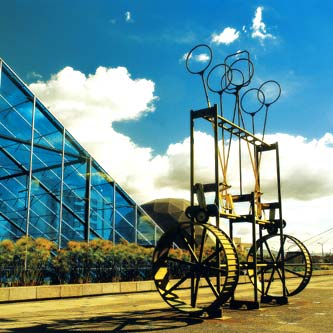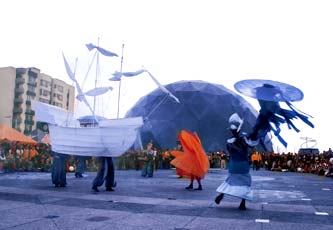Maloka, a place to meet science and technology
What problem does it solve?
Colombia is a country that invests little in science and technology, a sector that receives only 0.4 per cent of the gross domestic product. This low level of investment has led to repercussions on the teaching of science and technology and has limited the strategies for making these subjects familiar to communities that are currently deprived of schooling. This situation has brought about a certain level of technological and scientific dependency. Proof of this is that Colombia has one of the lowest invention rates in the southern hemisphere, and although over the last 10 years there has been an increase in numbers of students going on to study science after completing basic school education, it is still lower than other Latin American countries.
As an educational organisation for the familiarisation of scientific and technological values, Maloka has had a great impact on Colombian society. Since it first opened on 4 December 1998, after 18 months construction work, Maloka has hosted about 6 million visitors in its first five years of activity. These results have given Maloka a significant public image and it has received the backing of many social sectors concerned with science and technology.
The world’s most important interactive centres have benefited from a great amount of cash investment. Most exhibitions usually confine themselves to presenting and illustrating the principles of science and technology. Furthermore, studies show that most visitors are well educated. In these respects, Maloka is a different undertaking.
Maloka has faced and overcome the challenge of building a centre equal to other great science museums by managing its resources in conjunction with public and private bodies and enterprises whose services and products are concerned with science and technology. Another economic factor that has been fundamental in the creation and maintenance of the centre has been its capacity to develop and produce its own technology in setting up the exhibitions. This technological self-sufficiency breaks the traditional patterns of technology transfer typical of
developing countries.

Over and above the economic issues, Maloka has striven to broaden the level of representation of the country’s scientific community. In terms of public relations, compared to the world’s other great museums, Maloka attracts visitors from all social sectors. In fact, a great number of them are children from schools with low resources, who are given the chance to visit Maloka thanks to the work of the district education offices.
Compared to other interactive centres or informal educational programmes for the promotion of science and technology, Maloka is committed to broadening the social context. It has developed educational programmes that involve both public institutions (ministries, district education and environmental offices, local authorities, service providers) and private enterprise (Shell, Gas Natural, and other private energy companies). Maloka is committed to extending operations beyond the museum in Bogota, shifting activity to areas which otherwise would not have the chance to visit the centre.
In terms of educational proposals for the community, Maloka has organised exhibitions and activities that have travelled all over the country. Exploiting local installed capacity, as for example working with local guides, Maloka Viajera has been able to recreate centres for the familiarisation of science at the local level.
DOWNLOAD THE BROCHURE PDF
english (1.0 MB)spanish (1.0 MB)








 COUNTRY OF ORIGIN
COUNTRY OF ORIGIN